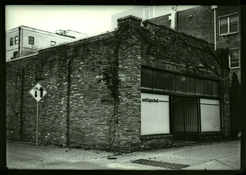Just a note that there really should be separate discussions on (semi)stand for each developers as they don't behave the same at all. As an exemple, conclusions drawn from using one of the popular pyros developers with (semi) stand can't be fully applied to more conventionnal developers commonly used with this technique like rodinal or HC-110, and certainely not caffenol.
With *theses three* (rodinal, HC-110, caffenol) I would not call semi-stand a safe method. From the numerous threads on the subject and personnal experience, even with extensive testing to find the ideal combination of agitation, reel positionning... and so on to eliminate bromide drag, the risk is still there and shouldn't be underestimated.
Keep in mind that the idea of semistand is to quickly exhaust highlight development but leave the film in developer a long to to allow shadows to fully develop and mid-tones to expand local contrast. This mandates a very highly dilute developer.
The normal dilutions published by Kodak are simply not
dilute enough. Their tables end at Dilution F at 1:79. I got perfectly fine semistand results with HC-110 at 1+128 developing for a full hour with an initial 2 minute agitation and a 10 second agitation at 31 minutes.
However, at that dilution, HC-110 sharpens a lot and you'll get more visible grain. It's not terrible for 120 or larger, but I wouldn't use it for 35mm.
The other thing is that superadditive developers, like DK-50 and HC-110, tend to really pump up the mid-tone contrast in long standing development. For these reasons I prefer Pyrocat-HD for semistand and use it at 1.5:1:250 or 300. This calms the midtone expansion to a pleasant level. And, of course, the Pyro stain helps mask grain, making it suitable for smaller formats.
Lastly what do we call semi-stand ? for some it's one inversion mid-way, for others so much intermediate inversion that it start to look like conventionnal agitation and the debate is muddied further..
The convention proposed by Sandy King and Steve Sherman that most people use in these discussions is:
Conventional: 1 or 2 agitations per minute or continuous agitation
Stand: 1 initial agitation followed by uninterrupted standing time
Semistand: 1 initial agitation and 1 agitation at the midpoint time during the stand
Extreme Minmal Agitation: 1 initial agitation, and several (2-4) brief agitations during the standing time
There is nothing magical about these definitions, they're just definitional conveniences so that we're all on the same page.
I have made my notes from the past several years of doing this available for others to read, here:

gitbucket.tundraware.com










 . I'll look more closely at them tomorrow.
. I'll look more closely at them tomorrow.



